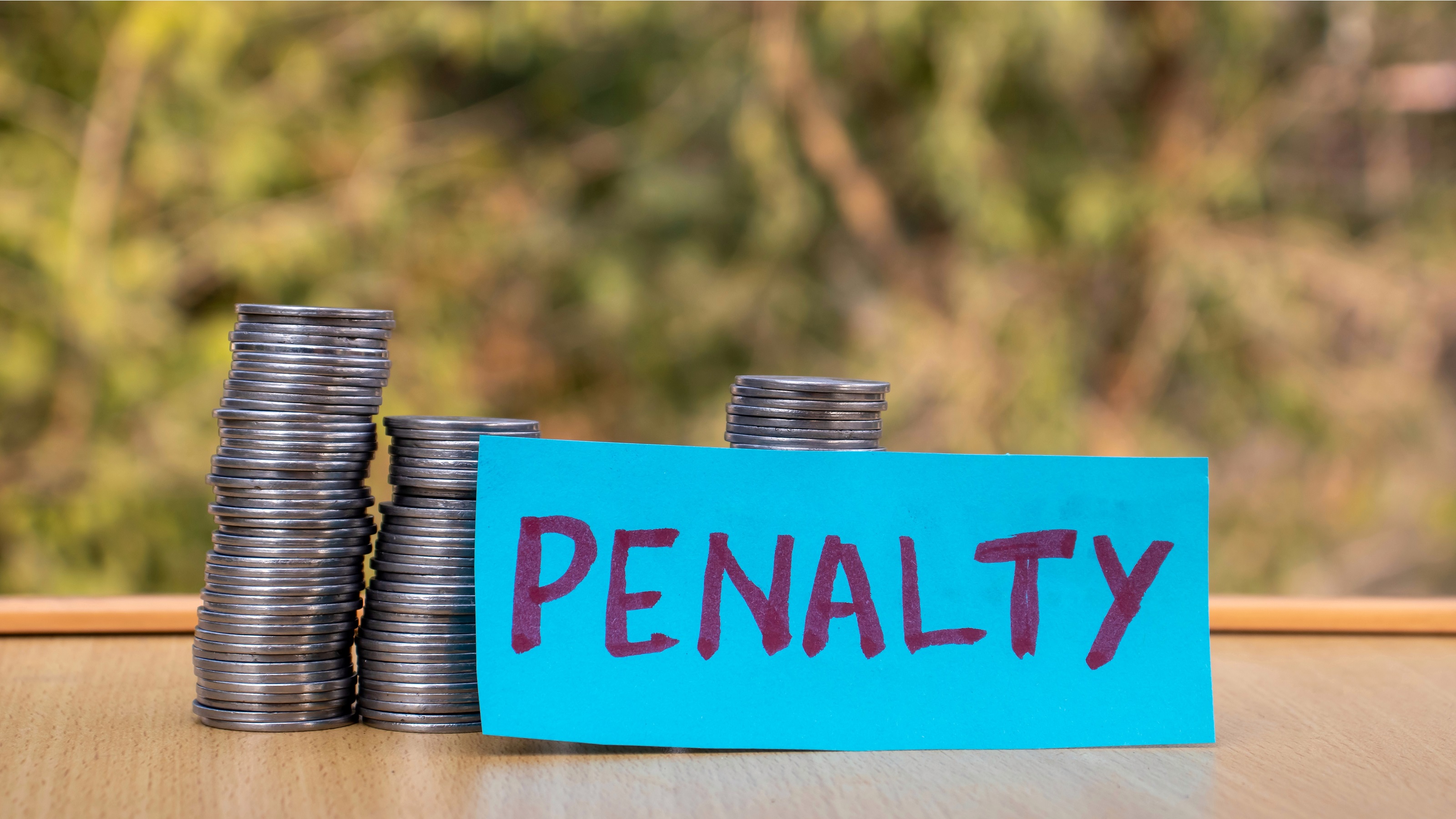Ways to Avoid the Penalty on Early Retirement Withdrawals
Sometimes you just can’t avoid dipping into a retirement fund, but you might be able to qualify for an exception to the 10% tax penalty.


Pulling money from your pre-tax retirement accounts before age 59½ should be done only as a last resort, since it can end up triggering both a 10% penalty as well as ordinary income tax. A far better solution is to use money from non-retirement accounts, such as joint accounts, single accounts or most trust accounts, where there will be no penalty on early retirement withdrawal and often little or far less tax.
But the reality is, sometimes people have nowhere else to go other than their pre-tax retirement plan to access needed cash. In such a situation, the income tax cannot be avoided, but the 10% early withdrawal penalty sometimes can be.
The most important thing to do to avoid paying an unnecessary penalty is to become familiar with what exception applies to what retirement plan. Many people who end up paying the penalty do so because the exception they used did not apply to the retirement account they took the money from. The good news is that most of the 10% penalty exceptions apply to both company plans, as well as IRAs, but as you’ll see, there are some very valuable exceptions that apply only to one or the other.
From just $107.88 $24.99 for Kiplinger Personal Finance
Become a smarter, better informed investor. Subscribe from just $107.88 $24.99, plus get up to 4 Special Issues

Sign up for Kiplinger’s Free Newsletters
Profit and prosper with the best of expert advice on investing, taxes, retirement, personal finance and more - straight to your e-mail.
Profit and prosper with the best of expert advice - straight to your e-mail.
A simple way to remember which penalty exception applies to which type of retirement plan is to think of three categories of early-withdrawal exceptions:
1. 10% Penalty Exceptions That Apply to “Both” Company Retirement Plans and IRAs.
This includes distributions to your beneficiaries after your death, disability, unreimbursed medical expenses above 7.5% of your adjusted gross income (you don’t have to itemize to use this exception), Roth IRA conversions and up to $5,000 for the birth or adoption of a child.
There are also some new exceptions that came into law with the passage of the SECURE Act 2.0 of 2022. Under this new law, you can tap your retirement accounts if you’re dealing with domestic abuse, coping with a natural disaster or if you’re diagnosed with a terminal illness, Also, starting in 2024, there will be a new emergency personal expense exception of up to $1,000.
And finally, if you need to take income on your retirement account before 59½, if you agree to set up a regular income known as Substantially Equal Periodic Payments for at least five years or until you reach age 59½, whichever comes later, such income can be taken without a 10% penalty.
2. Exceptions That Apply “Only” to IRAs.
This includes higher education expenses for yourself or your dependents, up to $10,000 toward a home for a first-time home buyer and to pay for health insurance if you are unemployed.
3. Exceptions That Apply “Only” to Company Retirement Plans.
There are two big ones here.
The first is the attainment-of-age-55 exception. Distributions made to you if you leave your company during or after the calendar year in which you reached age 55 (or age 50 for qualified public safety employees) will avoid the 10% penalty. The other is the Qualified Domestic Relations Order (QDRO), which means withdrawals made to the other spouse as part of a divorce will avoid the 10% penalty.
While the best approach if you need to get your hands on some cash is to use only a pre-tax retirement account as a last resort, if this can’t be avoided, remember that old saying “what you don’t know can hurt you.” You not only should know what the exceptions are, but you should become familiar with what exception applies to what retirement plan. This may save you what can sometimes be in the thousands or tens of thousands of dollars in unnecessary penalties.
Profit and prosper with the best of Kiplinger's advice on investing, taxes, retirement, personal finance and much more. Delivered daily. Enter your email in the box and click Sign Me Up.

-
 I'm want to give my 3 grandkids $5K each for Christmas.
I'm want to give my 3 grandkids $5K each for Christmas.You're comfortably retired and want to give your grandkids a big Christmas check, but their parents are worried they might spend it all. We ask the pros for help.
-
 If You're Not Doing Roth Conversions, You Need to Read This
If You're Not Doing Roth Conversions, You Need to Read ThisRoth conversions and other Roth strategies can be complex, but don't dismiss these tax planning tools outright. They could really work for you and your heirs.
-
 Could Traditional Retirement Expectations Be Killing Us?
Could Traditional Retirement Expectations Be Killing Us?A retirement psychologist makes the case: A fulfilling retirement begins with a blueprint for living, rather than simply the accumulation of a large nest egg.
-
 I'm a Financial Planner: If You're Not Doing Roth Conversions, You Need to Read This
I'm a Financial Planner: If You're Not Doing Roth Conversions, You Need to Read ThisRoth conversions and other Roth strategies can be complex, but don't dismiss these tax planning tools outright. They could really work for you and your heirs.
-
 Could Traditional Retirement Expectations Be Killing Us? A Retirement Psychologist Makes the Case
Could Traditional Retirement Expectations Be Killing Us? A Retirement Psychologist Makes the CaseA retirement psychologist makes the case: A fulfilling retirement begins with a blueprint for living, rather than simply the accumulation of a large nest egg.
-
 I'm a Financial Adviser: This Is How You Can Adapt to Social Security Uncertainty
I'm a Financial Adviser: This Is How You Can Adapt to Social Security UncertaintyRather than letting the unknowns make you anxious, focus on building a flexible income strategy that can adapt to possible future Social Security changes.
-
 I'm a Financial Planner for Millionaires: Here's How to Give Your Kids Cash Gifts Without Triggering IRS Paperwork
I'm a Financial Planner for Millionaires: Here's How to Give Your Kids Cash Gifts Without Triggering IRS PaperworkMost people can gift large sums without paying tax or filing a return, especially by structuring gifts across two tax years or splitting gifts with a spouse.
-
 'Boomer Candy' Investments Might Seem Sweet, But They Can Have a Sour Aftertaste
'Boomer Candy' Investments Might Seem Sweet, But They Can Have a Sour AftertasteProducts such as index annuities, structured notes and buffered ETFs might seem appealing, but sometimes they can rob you of flexibility and trap your capital.
-
 Quick Question: Are You Planning for a 20-Year Retirement or a 30-Year Retirement?
Quick Question: Are You Planning for a 20-Year Retirement or a 30-Year Retirement?You probably should be planning for a much longer retirement than you are. To avoid running out of retirement savings, you really need to make a plan.
-
 Don't Get Caught by the Medicare Tax Torpedo: A Retirement Expert's Tips to Steer Clear
Don't Get Caught by the Medicare Tax Torpedo: A Retirement Expert's Tips to Steer ClearBetter beware, because if you go even $1 over an important income threshold, your Medicare premiums could rise exponentially due to IRMAA surcharges.
-
 I'm an Insurance Pro: Going Without Life Insurance Is Like Driving Without a Seat Belt Because You Don't Plan to Crash
I'm an Insurance Pro: Going Without Life Insurance Is Like Driving Without a Seat Belt Because You Don't Plan to CrashLife insurance is that boring-but-crucial thing you really need to get now so that your family doesn't have to launch a GoFundMe when you're gone.